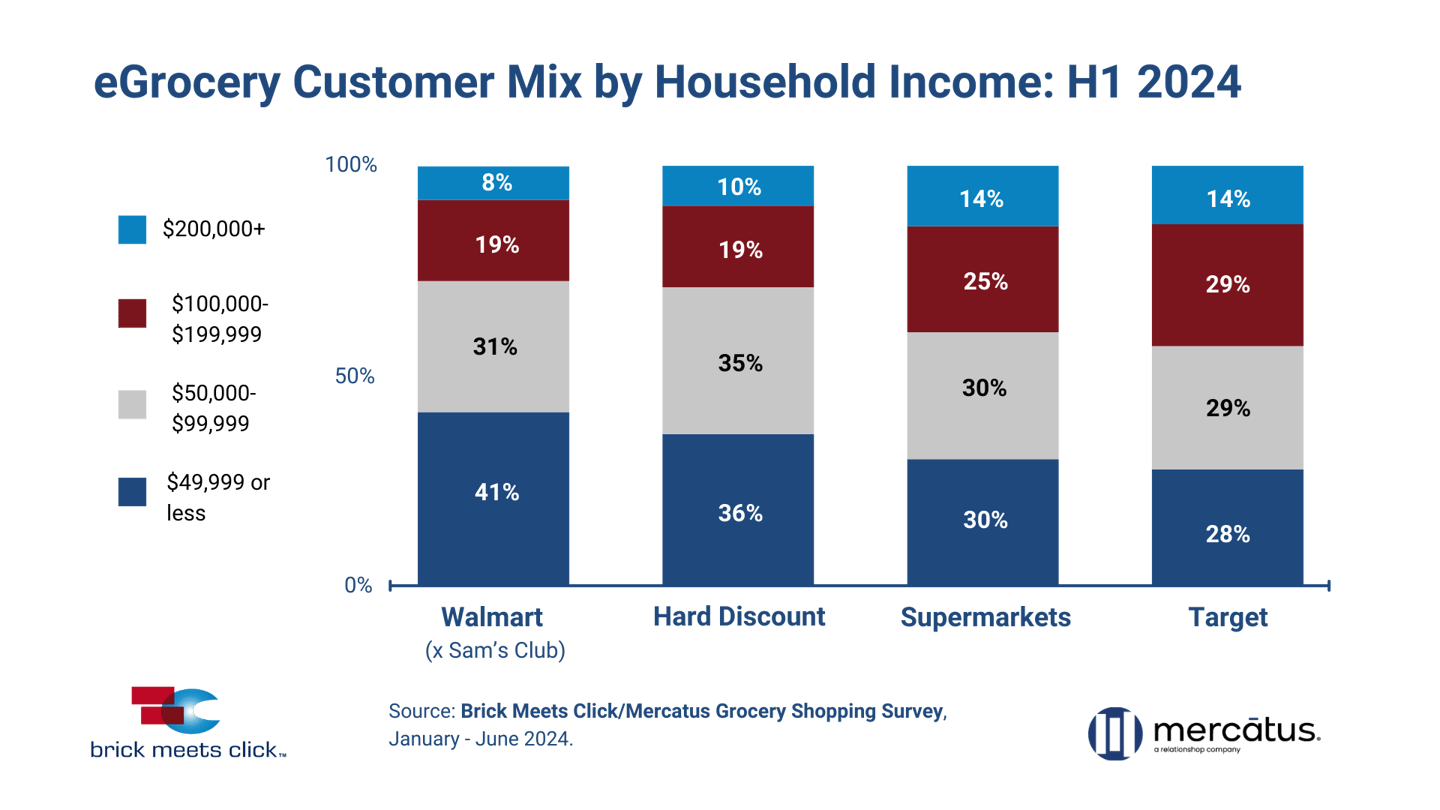Walmart's E-Grocery Attracts Higher-Income Shoppers
Walmart’s efforts to widen its e-footprint among more demographics is paying off, new data shows. According to the latest report on grocery purchase patterns in the United States from Brick Meets Click and Mercatus, the retail behemoth is growing sales among more affluent shoppers and that segment played an key role in driving Walmart’s performance during the first half of its fiscal year.
While Walmart’s main customer base comprises more lower income households than its competitors, sales from households with more than $200,000 in annual income hit 8% during the first six months of its year. That is almost five times faster than the 4% year-over-year growth for its overall monthly active user audience.
[RELATED: USDA Shares Its Take on Online Grocery Habits]
“Walmart’s growth in households making $200,000+ per year shows that the ‘flight to value’ has even affected how this income group shops for groceries,” observed David Bishop, partner at Brick Meets Click. “Affluent households that shop online for groceries at Walmart spend 1.5 times more each month than households in the lowest income bracket, making them a very attractive customer segment to target and win over.”
Purchases among lower-income households, defined as making less than $50,000, declined 6% during that period, the Brick Meets Click/Mercatus data found. That decline can be attributed to a general pullback within that base, as e-comm sales at supermarket and at another mass retailer, Target, dropped 20%.
The report dove deep into Walmart’s performance and underscored its overall strength. According to the research, traditional supermarkets, hard discounters and Target posted sales decreases during the first half of 2024. Overall average order values also went down at those kinds of formats, while Walmart’s numbers were steady.
Where do regional retailers stand in this omnichannel environment? Brick Meets Click/Mercatus reported that supermarkets retained the top spot for cross-shopping, but face stiff competition from Walmart.
"Regional grocers risk losing more of the business that’s driven by affluent customers to Walmart if they don’t effectively address shifting expectations,” said Mark Fairhurst, chief growth officer at Mercatus. “To retain existing affluent shoppers and possibly attract others, grocers need to strengthen their value propositions by offering unique products, personalized promotions, exceptional service, and enhanced digital experiences that elevate customer satisfaction."
Each week, approximately 255 million customers and members visit Walmart’s more than 10,500 stores and numerous e-commerce websites in 19 countries. With fiscal year 2024 revenue of $648 billion, the retailer employs approximately 2.1 million associates worldwide. Bentonville, Ark.-based Walmart U.S. is No. 1 on Progressive Grocer’s 2024 list of the top food and consumables retailers in North America. PG also named Walmart one of its Retailers of the Century.






